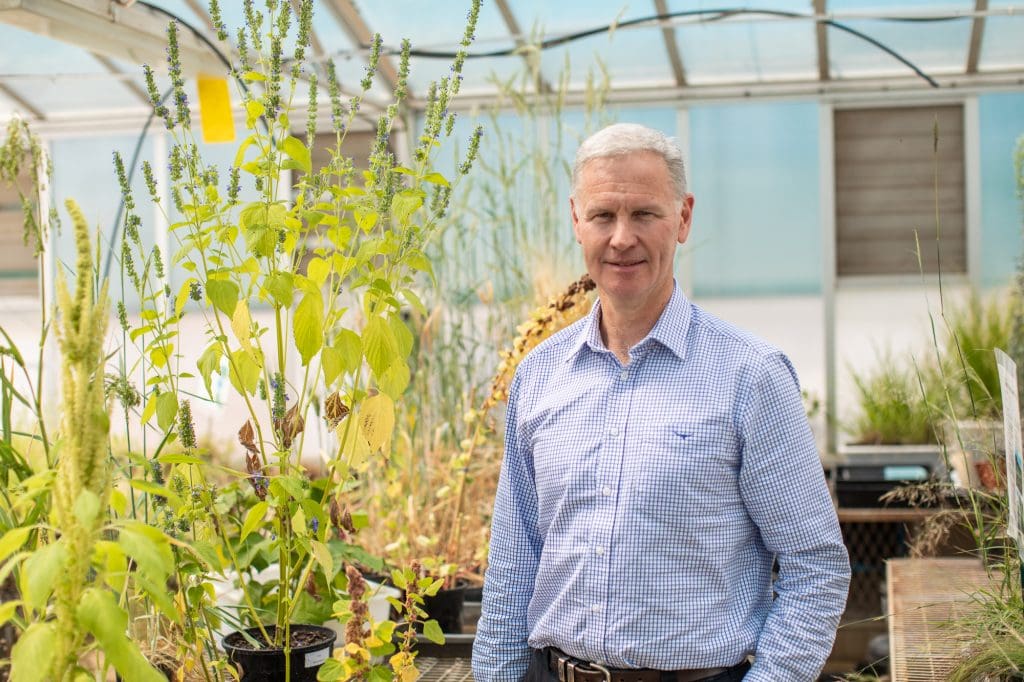
AgriFutures managing director, John Harvey
THE United Nation’s Sustainable Development Goals (SDGs) have been around for just five years and have already become the standard for measuring and reporting business, industry and country-level sustainability credentials.
Australia is well placed to take advantage of this international trend, so what is holding us back?
Australia has a strong focus on, and investment in, achieving best practice sustainability outcomes.
Our rural industries have greatly benefited from sustainability wins in areas such as improved water efficiency, more resilient crop varieties, reduced on-farm waste, access to carbon markets and efficient chemical use, to name a few.
However, our latest AgriFutures Australia study that looked into alignment with SDGs across the sector, completed by KPMG Australia, pointed out that we may not be promoting our strong credentials in a language that our trade partners understand.
Of increasing urgency is the need for Australia to respond to international pressure, particularly from the European Union, and more recently our Asian neighbours, to push beyond our ‘clean and green’ image and measure and report against internationally recognised sustainability metrics.
Maturing our approach to global sustainability benchmarking is vital to keeping pace with our trade competitors and avoiding losing market access.
The EU is leading the future of sustainability reporting.
If Australia is to maintain access to this and other markets, we need to increase awareness and encourage agricultural export businesses to look seriously at their alignment to international sustainability benchmarks, such as the SDGs.
These benchmarks are also tools for Australia to demonstrate its responsiveness to changing consumer expectations and attract sustainability-linked investment.
Early movers
An example of an early mover are Australian tea tree oil growers, Phillip and Dee-Ann Prather, who have incorporated the SDGs framework into their corporate policies around water conservation and chemical use as a strategy to sure-up their international market access.
The Prathers grow tea tree on their 120-hectare NSW north coast property and source product from 35 local growers to export to globally-recognised companies including Estée Lauder and L’Oréal.
The Prathers are just one of a growing number of businesses using the SDGs as a pathway to increase transparency and accountability around their on-farm production practices and better tell their sustainability story.
In turn, companies like Estée Lauder can promote sustainability across their supply chains to the end consumer, which is a win-win.
Industries are also using the SDGs to underpin their sustainability narrative and to build trust with the community.
The Australian goat fibre industry has recently updated its sustainable production guidelines in line with the SDGs to increase market share in the large international trade for goat fibre products.
Woolmark has taken a similar approach with their sustainable material guide which reports directly against SDGs, including climate action, responsible consumption, industry innovation, sustainable communities, clean water and gender equality, to name a few.
Recently, all Research and Development Corporations contributed to a study into the SDGs and telling Australia’s rural industries story.
I believe Australia’s rural industries have a huge opportunity to respond to growing global expectations around sustainability reporting. Alongside this opportunity however exists a threat, a double-edged sword. That is, if we don’t act quickly, we could end up behind our trade competitors.
Source: AgriFutures Australia



Rapid uptake of innovative soil and plant health objectives and methods, over all sectors of agriculture management is transforming food production methods with holistic focus on applied soil science .
Methods that reflect soil Physical, Chemical, and Biological factors, is transforming tired, worn soils to new life.
Examples are now frequently emerging of reduced dependence on crop protection inputs.
A century of varying levels of loss of Soil Organic Carbon is being reversed. Widespread adoption of No Til machinery and method has enabled soil to be improved by reducing excessive physical disturbance. Typically reducing the physical impact on soils, has reduced the rate of loss of Soil Carbon.
A clear upward trend of increasing Soil Organic Carbon by .15% per year has emerged. This turnaround is from properties adopting various methods and inputs, that intentionally manage Soil Mineral, Microbial, and Carbon Balance.
Productivity and produce quality are increasing. Additional farm income Is emerging as a tangible opportunity from generation of Carbon Offsets .
Permanent increased soil water holding capacity , and enabling efficient soil biological function , are key benefits of high carbon soils, and provide lasting benefit to profitable farming.
Adrian Lawrie Founder Director LawrieCo